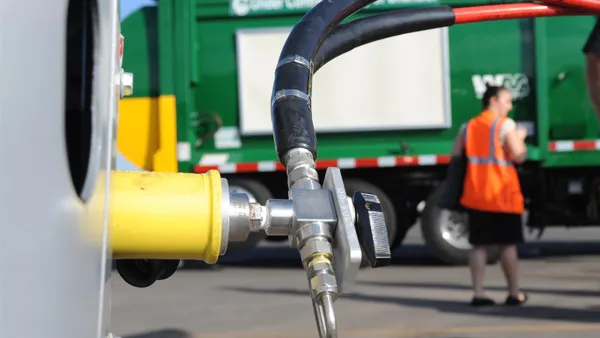Dive Brief:
- Circular enerG, the company behind a proposed waste-to-energy facility in Romulus, New York, filed a lawsuit against the Romulus Zoning Board of Appeals last week claiming it illegally tried to stop construction of the controversial project, according to WRVO and others.
- Last year, zoning board officials determined the WTE facility was a renewable energy source, which a town resident appealed in February, claiming the facility would emit harmful toxins. The board granted that appeal. In the complaint, Circular enerG claims the decision to uphold the appeal was done "with the specific intent to try to stop or impede a Waste-to-Energy project proposed by Petitioners, without due regard to applicable provisions of the law."
- Circular enerG is seeking a judge to void the decision of the zoning board. WRVO reports Romulus will defend the board's actions, according to town lawyer Patrick Morrell.
Dive Insight:
This suit is the latest display of contention that has surrounded this waste-to-energy project in upstate New York. Just a few weeks ago, Gov. Andrew Cuomo, D, issued a statement Tuesday that opposes Circular enerG's plans, which was followed days later by opposition from Senator Chuck Schumer, D.
Prior to this opposition from high-ranking public officials, the proposal received backlash from the Geneva City Council, the Ontario County Board of Supervisors, the Seneca County Board of Supervisors and the New York Department of Public Service. Circular enerG has stood by its $365 million facility, however, which would have the capacity to burn 2,640 tons of waste per day and generate up to 50 MW of energy.
Whether or not Circular enerG is successful in voiding the decision from the zoning board, the company still faces a long road of opposition from NIMBY residents and leaders who believe — and have believed from the start — that the incinerator project with have negative implications on local health, traffic congestion and value of homes in the area. The fact that the region is already home to multiple large landfills has also created a sense of being overburdened by disposal infrastructure.
This case is just one of many that illustrate the challenging environment for new WTE projects. It's been years since a new one was actually built in the U.S., largely due to arguments over "zero waste" goals and renewable energy definitions.










